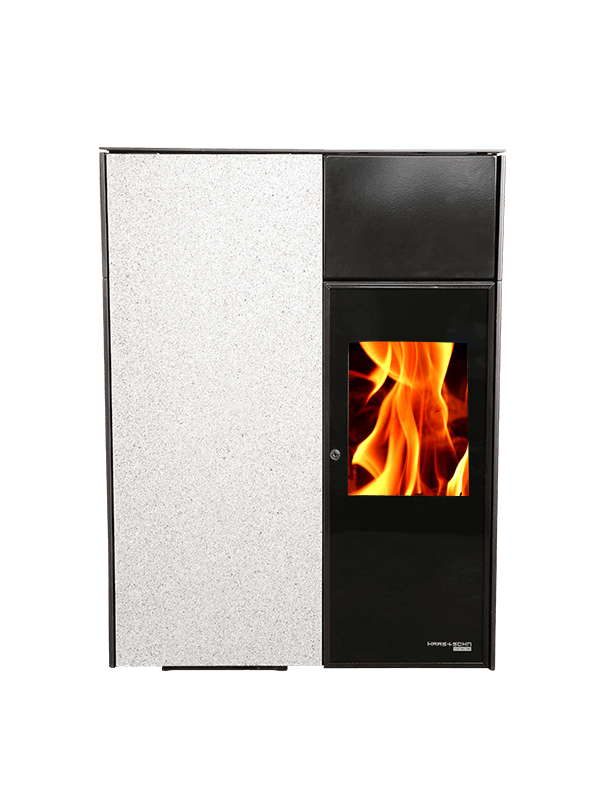A wood-burning stove is an efficient heating appliance able to burn wood and organic biomass fuel, like sawdust or paper-based pellets. In general the appliance contains a steel enclosed fire box, often lined with fire brick, and at least one or more thermostats. Thermostats control the rate of combustion of fuel. There are different types of wood-burning stoves and the amount of electricity they need to run should be considered when purchasing.
It is important to note that creosote formation in a wood-burning stove can cause serious toxic fumes if it is not adequately vented. Creosote is a dense, black, burnt substance found in some old forest stoves. The amount of creosote and its harmful effects depend on the temperature of the fuel/stove and the duration of time the fuel has been burning.
An important point to consider when purchasing a wood-burning stove and fireplace insert is safety. Always use safety precautions while operating any appliance - especially if it is your first time doing so. Read the manufacturer's instructions carefully before starting any kind of heating device and follow them religiously. Never leave a room where you may have used a wood-burning stove without wearing protective clothing, including gloves. When using an appliance such as a wood-burning fireplace insert, never use any extension cords, cables, or heat exchangers.
For efficient heat production, set the wood-burning stove to the desired heat setting prior to starting the fire. Turn the stove controls to the desired speed. Never place any inflammable material near the fire; these could start a fire and spread even if you do not ignite the fuel. The stove control should be placed close enough to ignite the fuel so that you can quickly extinguish any fire that starts.
To get optimal performance, collect as much hardwoods or softwoods as possible. Although both are kind of trees, only hardwoods produce more desirable and longer lasting firewood. Collecting hardwood and softwood makes it easier to select the appropriate kind of wood-burning stove for the room you are going to heat. If you live in a cold area, collect only hardwoods such as pine. If you live in a warm area, collect as much softwood as possible.
Wood-burning stoves and fireplaces require quite a bit of maintenance. In order to maximize the life of the fuel, always keep the firewood fresh and dry. Remove hardwood and softwood debris from chimneys and flues on a regular basis to promote better combustion and longer burning time. Wood-burning stoves and fireplaces also require annual maintenance and care to keep them up to date and performing at their best.



